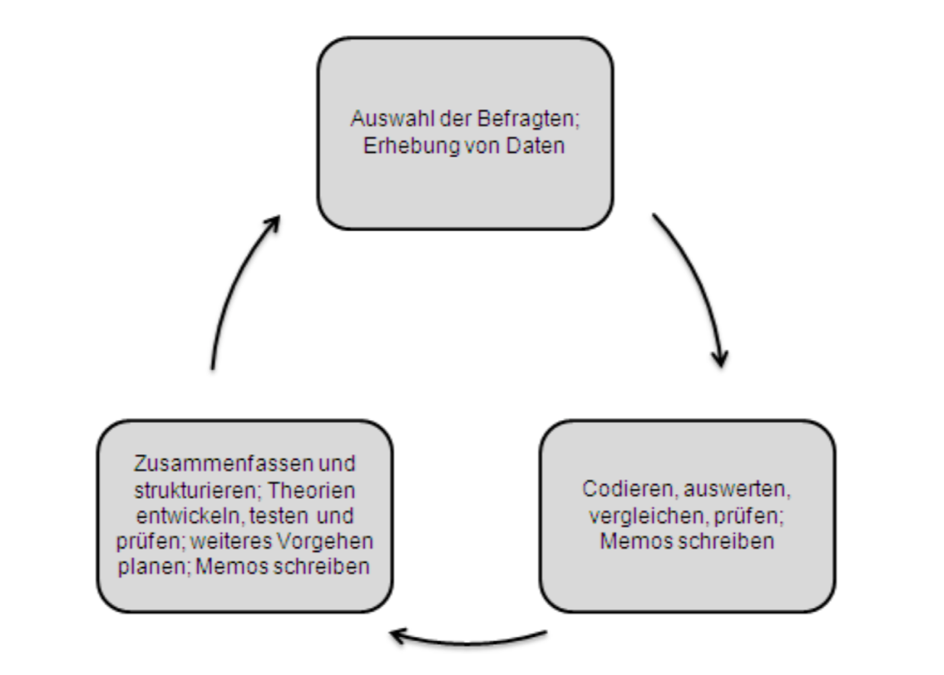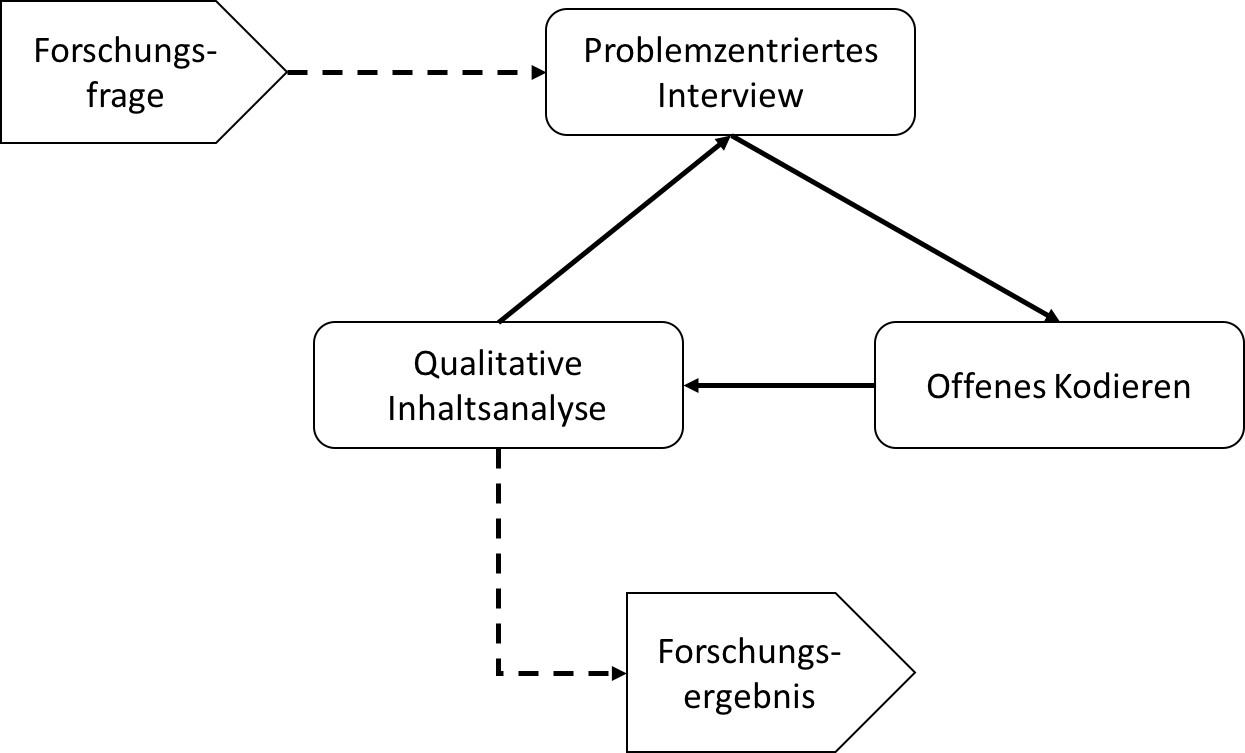Grounded Theory is a social science approach to the systematic collection and evaluation of primarily qualitative data (interview transcripts, observation protocols) with the aim of generating theory. It is not a single method, but a series of interlocking processes (Source: Wikipedia ).
I often notice that there is no direct literature on many new topics about digital change and therefore not through a normal one Literature analysis can be explored. So the researcher has to generate knowledge himself. Grounded theory can help here.
What is the Grounded Theory?
To this end, Bodendorf et al. (2010): The grounded theory is derived inductively through systematic collection and analysis of data related to the research object (Strauss and Corbin 1996, p. 7). Data collection, analysis and the emerging theory are arranged in a cycle that is run through several times as part of a research process. The following figure shows the control loop.

By and large, it means that you choose test subjects, question them, evaluate the whole thing and plan how to proceed. The real thing that is difficult to understand about grounded theory is the evaluation, i.e. the coding. There are 3 ways to do this:
- Open coding
- The axial coding
- Selective coding
With open coding, the data is analyzed in small pieces by being broken down into units of meaning and thus transferred to a first level of abstraction. This is useful when you have absolutely no plan on how to structure your research. With axial coding you have a research scheme as a basis, which already provides categories. Check these and develop them further. A framework such as Porter’s Five Forces or something similar is usually suitable here. With selective coding, you already have categories and want to subdivide them as a goal. For example: workplace bullying to active and passive bullying.
When do I use the Grounded Theory?
The Grounded Theory takes some time and is really very complicated. It requires perseverance and a lot of motivation from the researcher. So really only use this for your work if you are really up for it and if you really want to drive the topic and there is no literature.
Book tip: Grounded Theory
Example of grounded theory
I did not apply the Grounded Theory myself, but supervised a master’s thesis. Depending on the practice partner, the bimodal IT should be researched. Unfortunately, at this point in time there was no other literature besides the Gartner paper and one of the only journal papers. So we decided to choose the Grounded Theory.
Tip: don’t forget yours Cleanly limit methodology.
In the first step, the student then carried out 5 interviews in the company. It should be said that the practice partner was a very large corporation and therefore the interview partner resource was virtually infinitely available.
In the first step the question was asked: What do you understand by bimodal IT? We evaluated and discussed this together. Now, in the second step, you asked: What use cases do you associate with bimodal IT in your company?
After we also evaluated this, we went in a third cycle with another 5 interviews. Since digital transformation was constantly being talked about in the second cycle, we decided to ask in the third step: What does bimodal IT have to do with digital transformation? This can be continued indefinitely, but three cycles were enough for a master’s thesis. So my master’s student used the following cycle:
- Problem-centered interview
- Open coding
- Qualitative content analysis
In summary, it is therefore important that data is collected and evaluated in every step. The next step is only planned after each step has been completed. I recommend 3-5 interviews per step.
Reading tip: Book suggestions for theses

Bodendorf, F., Löffler, C., & Hofmann, J. (2010). Research methods in business informatics. business Informatics , (1), 1-44.
Strauss, A., & Corbin, J. (1996). Grounded theory . Weinheim. Retrieved from http://cms.educ.ttu.edu/uploadedFiles/personnel-folder/lee-duemer/epsy-5382/documents/Grounded theory methodology.pdf



